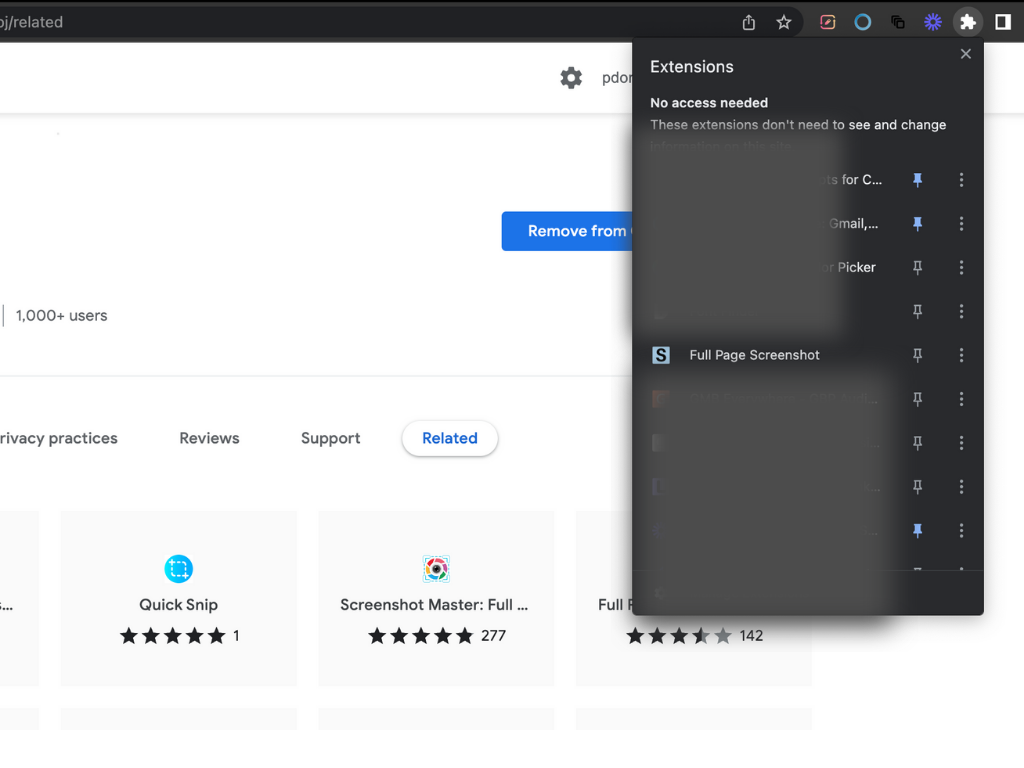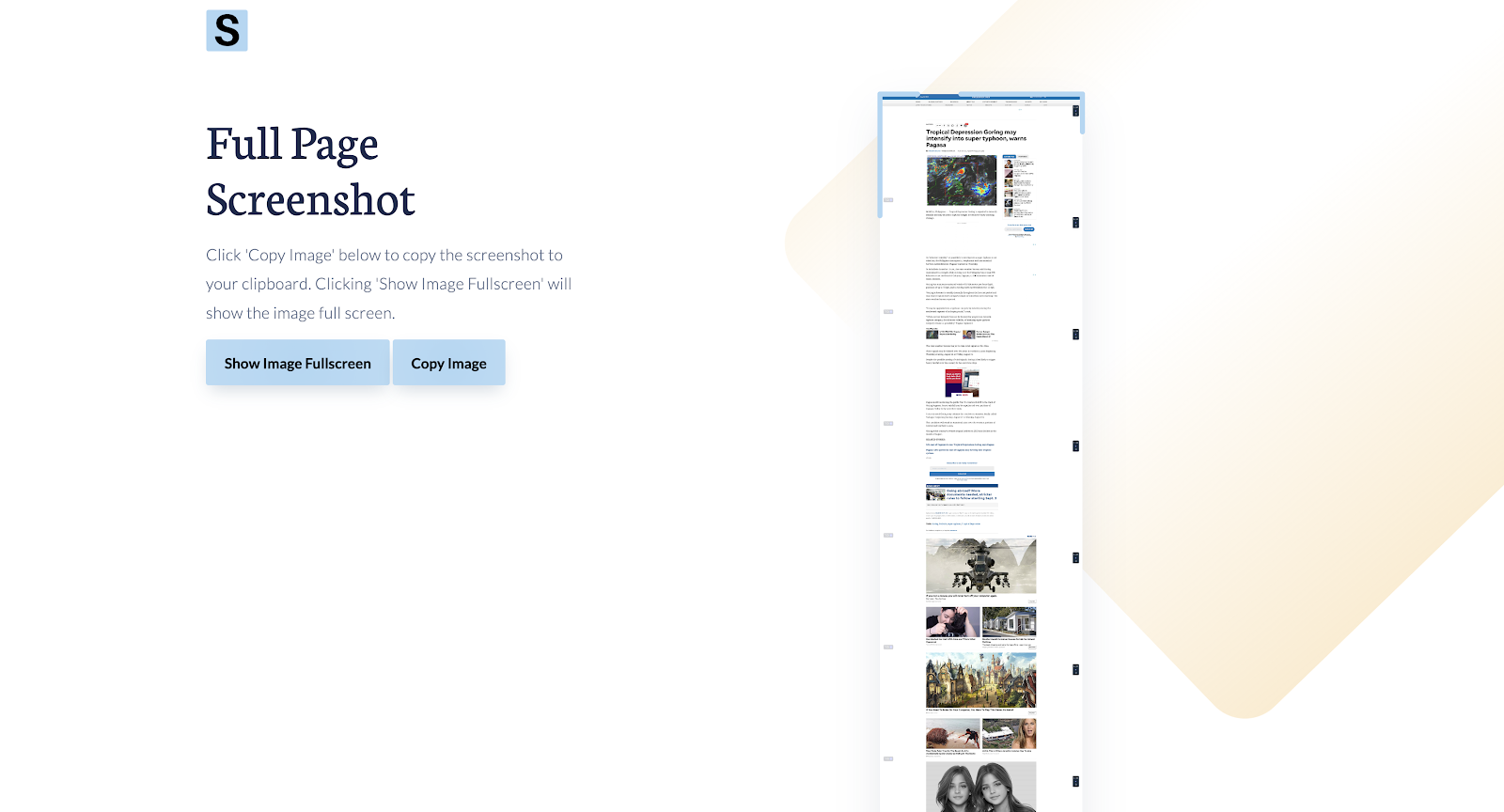How to Take Full Page Screenshot?
In this article we go through how you can take a full page screenshot with a simple tool.
How to take a Full Page Screenshot?
The Full Page Screenshot tool simplifies the process, allowing users to capture an entire webpage with just a single click. This extension is designed to automatically scroll through the website, ensuring that the entire page is captured seamlessly. Once the screenshot is taken, users are redirected to a page where they have the option to either download the image or copy it directly to their clipboard.
Step #1: To try this lightweight but easy-to-use tool, just go to Full Page Screenshot Chrome Store Page, and click Add To Chrome. You can also download it from screentool.io.

Step #2: This will automatically add Full Page Screenshot to your Chrome browser. To use it, click on the Extensions icon found on the upper right corner of your Chrome browser. You also have the option to bookmark the extension for easier access on the address bar.

The extension will scroll through the page and will take a snapshot of the current tab.

Step #3: You have the option to either Copy Image or Show Image Fullscreen. Copy image will put the screenshot in the clipboard which you can use to paste to any document or image-supported fields.

Show Image Fullscreen allows you to save the image to your desired folder. Click on the button, and on the newly opened tab, right click and select Save Image As. Select the folder you want to save your image to.
With Full Page screenshot, you can worry no more in taking full web page screenshots with any editing tool intervention.
What is a Screenshot?
A screenshot, also known as a screen capture or screen grab, is a digital image that captures and illustrates the current view on a computer or mobile device screen. This can be the entire screen, a specific window, or a user-defined section. Screenshots can be taken using built-in tools on most devices, or through specialized software that offers enhanced features like annotations, full-page captures, and more.
The Importance of Screenshots in Distance Learning
Clarity and Precision: Screenshots provide a visual representation of specific points of interest, ensuring that both educators and students are on the same page, quite literally. This can be especially useful when discussing complex topics or software interfaces.
Resource Sharing: Instead of describing a resource, educators can take a screenshot of it, ensuring students know exactly what to look for or where to click.
Feedback: Screenshots allow educators to provide visual feedback on assignments, highlighting areas of excellence or those that need improvement.
Documentation: For students, screenshots can serve as a way to document important points or resources for later review.
Enhanced Engagement: Visual aids, including screenshots, can make lessons more engaging and can help cater to visual learners.
Privacy: In situations where sharing a live screen might reveal sensitive information, screenshots can be used to share only the necessary information.
Flexibility: Screenshots can be integrated into various platforms, from PowerPoint presentations to Learning Management Systems (LMS), offering educators flexibility in how they deliver content.
Ways Educators Can Utilize Screenshots for Better Remote Learning
Tutorials and Guides: If educators are introducing a new software or platform, screenshots can be used to create step-by-step guides, ensuring students understand how to navigate and use the tool effectively.
Assignment Feedback: Instead of writing lengthy comments, educators can take a screenshot of a student's work and annotate directly on it, pointing out areas that need attention.
Resource Highlighting: When sharing a list of resources, educators can take screenshots to highlight specific articles, books, or web pages, ensuring students focus on the most relevant materials.
Discussion Prompts: Screenshots of relevant news articles, research findings, or even tweets can be shared as discussion prompts, encouraging students to engage in topical conversations.
Error Correction: If students are working on coding, design, or any task where errors might occur, screenshots can be a way for students to share their issues and for educators to provide solutions.
Quizzes and Tests: Educators can use screenshots to create visual quizzes, asking students to identify or explain the content within the screenshot.
Demonstrating Processes: For subjects like math or science, educators can use screenshots to capture and share step-by-step solutions or processes.
Creating Visual Libraries: Over time, educators can accumulate a library of screenshots on various topics, creating a visual repository that can be shared with future students.
Collaborative Projects: When students are working on group projects, they can use screenshots to share their contributions, ensuring everyone is updated on the project's progress.
Time Management: For younger students or those who struggle with time management, educators can share screenshots of calendars or schedules, visually guiding students on how to allocate their time.
Conclusion
In conclusion, while the concept of a screenshot might seem simple, its applications in the realm of distance or remote learning are vast. As educators continue to navigate the challenges and opportunities of online education, tools like screenshots can play a pivotal role in enhancing the learning experience, ensuring clarity, engagement, and effective communication. As with any tool, the key lies in its innovative application, and in the realm of education, the possibilities with screenshots are only limited by one's imagination.
Check out our guide articles for more.
.svg)





